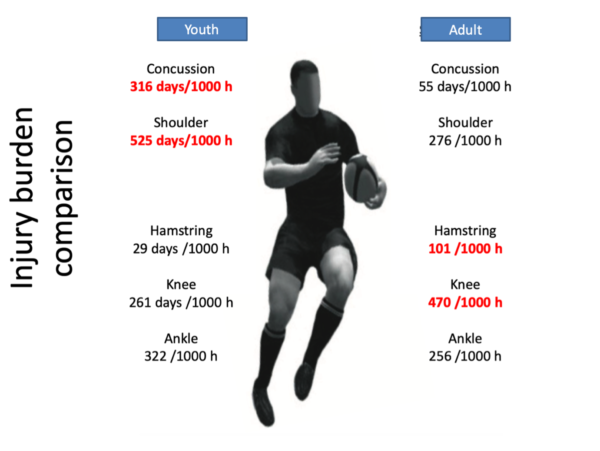The effect of age on sport injury risk
Age and maturity may put younger athletes at risk for certain types of injuries
While increasing age increases overall injury risk in athletes, clinicians may misinterpret that fact and ignore the injury risk in the young(1). Indeed, older athletes (30 years or greater) need careful management due to longer recovery needs. However, increasing maturity is not the only way age is an injury risk factor(2). Injury profiles differ between adult and youth athletes, thus showing their susceptibility to different types of injury.
Comparing adult professional and u19 academy-level rugby league players (see figure 1) shows that the burden of shoulder injury is almost double in younger players and youth players lose nearly six times more training days to concussion. This statistic suggests that players might not have sufficient shoulder and neck strength to cope with repeated collisions at this age. An appropriate intervention strategy might be to emphasize upper-body strength training in this group.
On the other hand, adult players have a higher burden of hamstring and knee injuries than youth players. Because of their size and age, they may experience more fatigue and delayed recovery time. Training or playing under fatigue decreases neuromuscular control and increases injury risk(3). On this basis, the data could suggest that adult players need careful monitoring of their fatigue level and recovery status.

This article explores why these differences in injury risk at different agaes occurs and goes on to suggest some possible strategies to customise injury prevention approaches. Full article available at https://www.sportsinjurybulletin.com/the-young-and-reckless-the-influence-of-age-on-sports-injury/